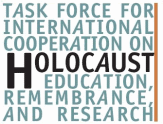Exposition
Curator's Note
The coexistence of Czechs, Germans, and Jews might seem to be an abstract, difficult issue to grasp, but only until the stories of specific people begin to emerge. We succeeded in finding historical eyewitnesses, we discovered and have made available old chronicles that were written in both Czech and German languages, we tracked down old photographs of people who once inhabited the Šumava region, and we sifted through various documents in the archives all over the world. Our effort resulted in an exhibition that introduces Šumava as a peculiar place where people of various languages and religions lived together for centuries with mutual tolerance. We not only bring you stories of Šumava's understanding and collaborative communities, but also stories of Nazi and Communist hatred that left permanent scars on the face of this region and its people.
The coexistence of Czechs, Germans and Jews in Šumava
The main exhibition is located on the former women's gallery of the synagogue. It presents the history of Šumava and emphasizes the different roles played by the three ethnics that have lived here. The coexistence of Czechs, Germans and Jews is visualized through historical photographs and documents. Short texts guide the visitor through the history of Šumava from its colonization, through to the time of booming handmade crafts and tourism, to the fall of the coexistence of ethnic people caused by Nazism and Communism. The exhibition places the stories of people in historical and political contexts and particularly discusses the history of Hartmanice as a great example of the once functioning and later destroyed coexistence of ethnic peoples. In contrary to other museums, this exhibit does not omit either the persecution of the Jews in WWII, the expulsion of the Germans after 1945, or the Cold War and the Fall of the Iron Curtain. These events are presented nonideologically and without bias. On the ground floor, artifacts from the Museums of Šumava are displayed.
Šumava captured in old photographs
 On a raw stone wall in the gable of the synagogue, photographs from the collection of Pavel Scheufler are displayed. They depict people, buildings and the nature of Šumava from over a hundred years ago. In the atmosphere of a restored building, the historical photographs are extra compelling.
On a raw stone wall in the gable of the synagogue, photographs from the collection of Pavel Scheufler are displayed. They depict people, buildings and the nature of Šumava from over a hundred years ago. In the atmosphere of a restored building, the historical photographs are extra compelling.
Šumava villages before and after the Iron Curtain
 After the Communist regime took hold of power, it painfully affected Šumava. Villages, settlements or farms that were within several kilometers from the border with Germany, were systematically eliminated. Among them were villages with hundreds of inhabitants who had lived there for generations. As a memorial to these settlements, pairs of photos (by Honza and Blanka Reichardt) are exhibited on the ground floor of the synagogue. These photos portray settlements from two different periods: before 1948 and today. The location of these settlements and other eliminated villages are easy to find on the large map next to the photographs.
After the Communist regime took hold of power, it painfully affected Šumava. Villages, settlements or farms that were within several kilometers from the border with Germany, were systematically eliminated. Among them were villages with hundreds of inhabitants who had lived there for generations. As a memorial to these settlements, pairs of photos (by Honza and Blanka Reichardt) are exhibited on the ground floor of the synagogue. These photos portray settlements from two different periods: before 1948 and today. The location of these settlements and other eliminated villages are easy to find on the large map next to the photographs.
History and reconstruction of the synagogue
> In the attic, a pleasant room hosts the story of the Jewish community and the synagogue including its reconstruction.
In the attic, a pleasant room hosts the story of the Jewish community and the synagogue including its reconstruction.










